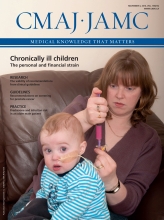In the spring of 1918, after three years of fighting on the Western Front, a 25-year-old soldier in the Canadian army was sent to a series of military hospitals in France, the United Kingdom and eventually Cobourg, Ontario, after which, he was discharged as “medically unfit” due to “sickness” in 1919. He had what was then known as “shell shock.” After the war, he seldom spoke to his family about his experiences, other than to describe the 1917 Battle of Passchendaele as “mud, noise and death.” Like many veterans, World War I haunted him for the rest of his life. His name was Francis Udall, and he was my maternal grandfather.
In the emergent field of critical disability studies, my grandfather’s experiences, like those of so many who have been traumatized by war and conflict, are understood in the context of the barriers society placed on these soldiers — barriers that served to pathologize, confine and ostracize them. Above all else, this new discipline allows disability — madness in this case — to be understood from the perspective of the person who experiences it, as much as this is possible. One hundred years after the start of the war that gave rise to the term “shell shock,” there exists a field of study that recognizes the expertise of disabled people in understanding their own life, while advocating for progressive societal change.
Critical disability studies view disability as both a lived reality in which the experiences of people with disabilities are central to interpreting their place in the world, and as a social and political definition based on societal power relations. Emerging from the activism of disabled people in the 1970s, this area of study involves both academics and activists representing multiple disciplines and perspectives. It challenges approaches that pathologize physical, mental and sensory difference as being in need of correction, and instead advocates for both accommodation and equality for disabled people in all areas of life. Critical disability studies seek to change conventional notions of disabled people as pitiable, tragic victims who should adjust to the world around them. This charity model is criticized for providing badly needed services without engaging the underlying causes of social exclusion. Barriers to education, employment, transportation and a host of services, both public and private, all come under the scrutiny of critical disability studies, a field that works toward universal accessibility.

Francis Udall in 1915, in England, before leaving for France and Belgium.
Image courtesy of Courtesy of Geoffery Reaume
Changing public attitudes toward disabilities is important. Some argue that the term “disabled people” emphasizes that disability is an essential part of self-identity. Others argue that the term “people with disabilities” stresses that functional limitation is only one aspect of overall identity. Neither term is universally accepted. As language changes, so too will these terms, but the very fact that this debate exists reflects the efforts of a long-marginalized community to assert how they should be defined on their own terms.
In some cases, people categorized as disabled reject the term outright; for example, people who identify as “Deaf” with a capital “D” argue they are a linguistic minority who do not have a disability. Thus, even within the field itself there are people who prefer to be thought of as other than disabled. Critical disability studies also examines how disability intersects with race, gender, class and sexuality in ways that influence wider power relations and personal experiences.
Included in these interpretations are several analytical models developed by activists and academics. The “social model of disability,” interprets disability as a construct imposed by external powers (e.g., medical, legal and governmental systems). In this model, there is a difference between impairment — a practical restriction — and disability — a difference promoted by society without considering impairments. The “rights model of disability,” advocates for legal change to address inequities with the view that disabled people deserve equal rights and access. The “cultural model of disability” focuses on how the reality of disability is understood within a cultural context as an experience that can be positive but also lead to discrimination and physical and psychological pain.
These models are the subject of much debate and revision, as are other approaches not included here; there is no single way to understand and address the effects of excluding people from society based on a label of disability. What is central is understanding and including disabled people as the experts in their own past and present. In this sense, critical disability studies aim to reinterpret what it means to be considered disabled, bringing people who live this experience to the process as the primary agents of change in word and deed. A major part of this work is therefore to ensure that this field is by, not just about, disabled people.
My grandfather spent most of his last two years on a psychiatric ward of a veteran’s hospital before dying in 1974 at the age of 81. Right around the time Francis Udall died, activists in various parts of the world were organizing to advocate that people with various forms of disability — sensory, mental or physical — be thought of as engaged citizens rather than as neglected outcasts. Although the definition of an inclusive society tends to recalibrate over time, critical disability studies aims to relegate injustices toward disabled people to the past.
See Appendix 1 (available at www.cmaj.ca/lookup/suppl/doi:10.1503/cmaj.141236/-/DC1) for further reading on disability studies.











